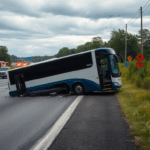Table of Contents
The Metropolitan Transportation Authority (MTA) is ramping up its efforts to combat fare evasion, but the latest measures have sparked significant debate among subway riders. Critics argue that the agency’s approach could jeopardize passenger safety, particularly in emergency situations.
The MTA’s new initiative involves locking subway emergency gates for 15 seconds after they are opened, a move aimed at preventing fare evaders from sneaking into the system without paying.
Riders express safety concerns
While the MTA claims that this pilot program will be implemented at over 150 stations, many riders are worried about the potential consequences of such a delay.
Sharon McLennon-Wier, executive director of the Center for Independence of the Disabled New York, highlighted the risks during emergencies. “When you’re in a state of panic and need to get out of a place fast, that 15-second delay is a long time,” she stated.
This sentiment was echoed by Dustin Jones, a disability advocate who has previously sued the MTA over accessibility issues. He described the program as “very dangerous,” emphasizing that every second counts during an emergency.
Financial implications of fare evasion
The MTA’s crackdown comes in response to a report indicating that fare evasion has reached “crisis-level,” costing the agency an estimated $690 million in 2022 alone.
The report warns that every dollar lost to fare evasion threatens the MTA’s financial stability and could lead to increased fares for all riders. The agency has been proactive in addressing this issue, deploying gate guards at over 200 stations and modifying turnstiles to deter jumpers.
These measures have reportedly resulted in a 26% drop in fare evasion in the latter half of 2024.
Mixed reactions from the public
Public opinion on the MTA’s new measures is divided. Some riders, like 68-year-old Bernice Parks, believe that the risk to safety outweighs the benefits of reducing fare evasion.
“Can you imagine if there’s a track fire and there’s smoke and everyone comes rushing up to the door trying to get out?” she questioned. Others, however, see the initiative as a necessary step to curb fare evasion. Wolf Mandelstam, a local resident, expressed his support, stating, “I’m tired of watching people cheat the fare while the rest of us pay.”
Future measures and ongoing efforts
Looking ahead, the MTA plans to implement additional interventions, including new “wide-aisle” fare gates at 20 stations by 2029. These gates will be tested in various models to ensure effectiveness. New York City Transit President Demetrius Crichlow emphasized the importance of maintaining a fair system for all riders, stating, “Fare evasion undermines the very system that moves New York City.” As the MTA continues to explore measures to enhance fare compliance, the balance between financial stability and passenger safety remains a critical concern.





